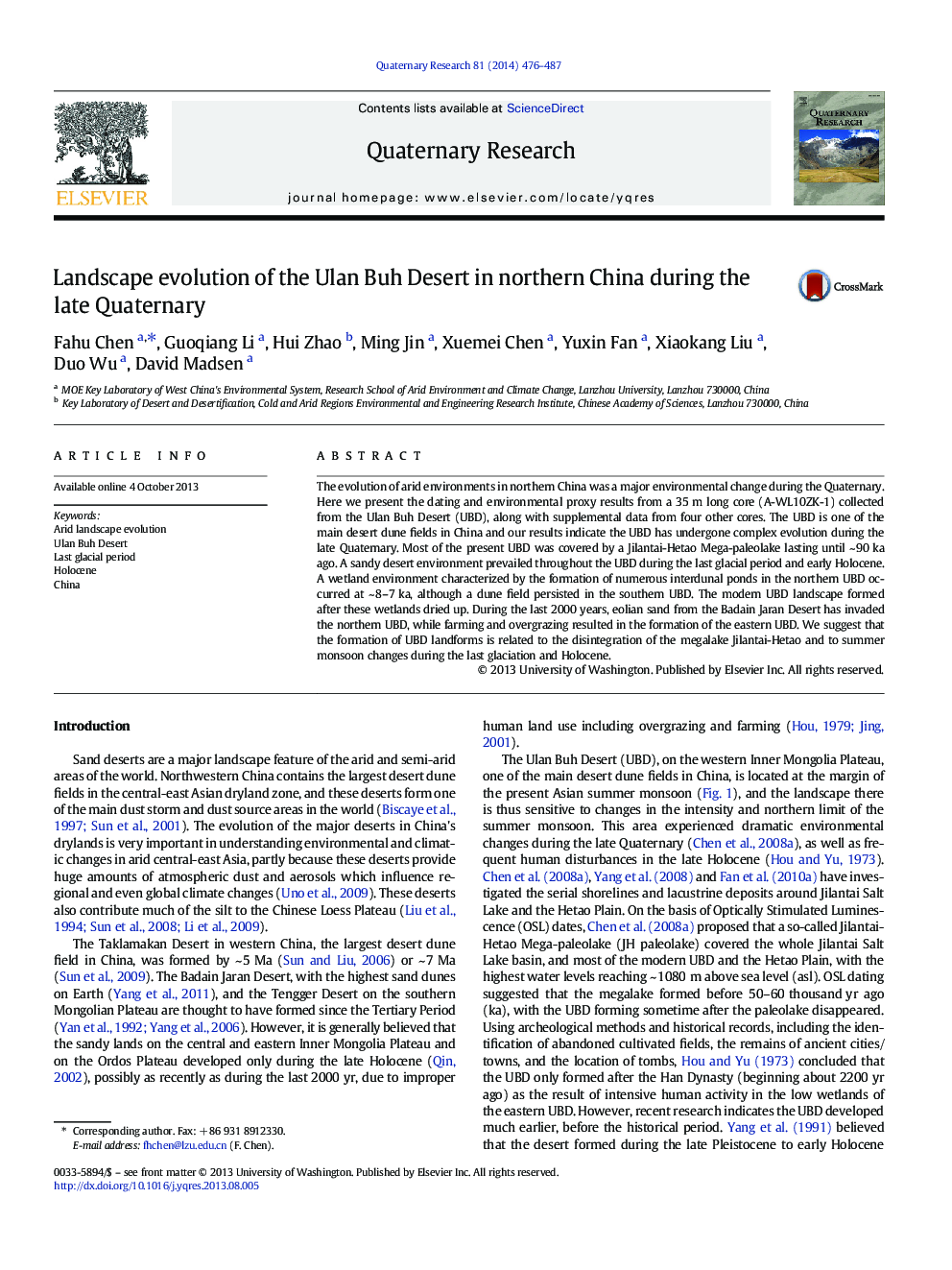| کد مقاله | کد نشریه | سال انتشار | مقاله انگلیسی | نسخه تمام متن |
|---|---|---|---|---|
| 1045166 | 944803 | 2014 | 12 صفحه PDF | دانلود رایگان |
The evolution of arid environments in northern China was a major environmental change during the Quaternary. Here we present the dating and environmental proxy results from a 35 m long core (A-WL10ZK-1) collected from the Ulan Buh Desert (UBD), along with supplemental data from four other cores. The UBD is one of the main desert dune fields in China and our results indicate the UBD has undergone complex evolution during the late Quaternary. Most of the present UBD was covered by a Jilantai-Hetao Mega-paleolake lasting until ~ 90 ka ago. A sandy desert environment prevailed throughout the UBD during the last glacial period and early Holocene. A wetland environment characterized by the formation of numerous interdunal ponds in the northern UBD occurred at ~ 8–7 ka, although a dune field persisted in the southern UBD. The modern UBD landscape formed after these wetlands dried up. During the last 2000 years, eolian sand from the Badain Jaran Desert has invaded the northern UBD, while farming and overgrazing resulted in the formation of the eastern UBD. We suggest that the formation of UBD landforms is related to the disintegration of the megalake Jilantai-Hetao and to summer monsoon changes during the last glaciation and Holocene.
Journal: Quaternary Research - Volume 81, Issue 3, May 2014, Pages 476–487
